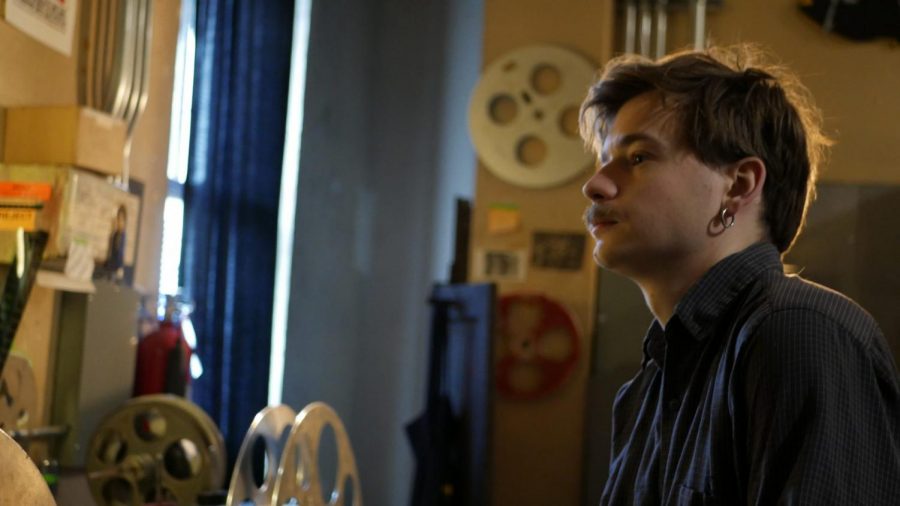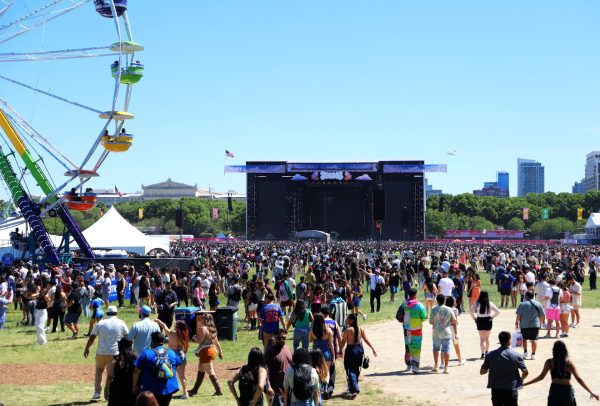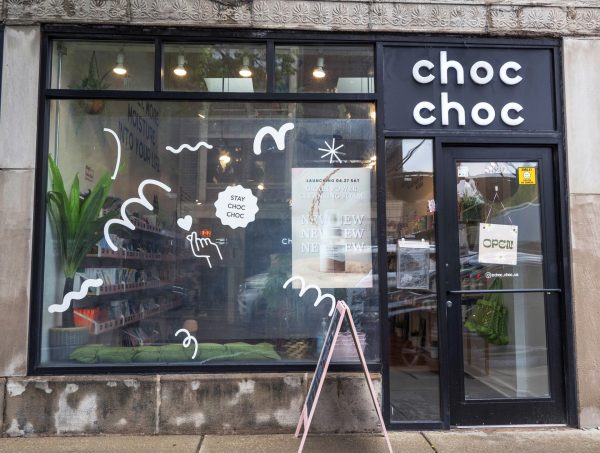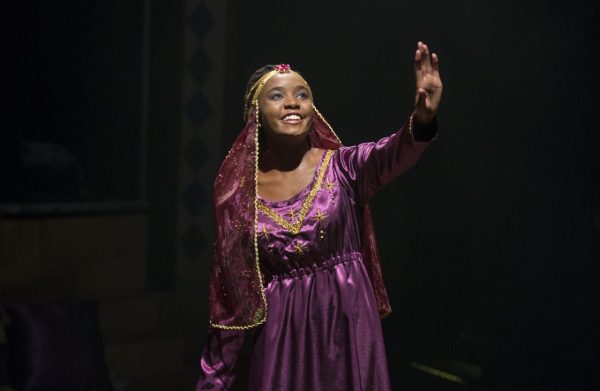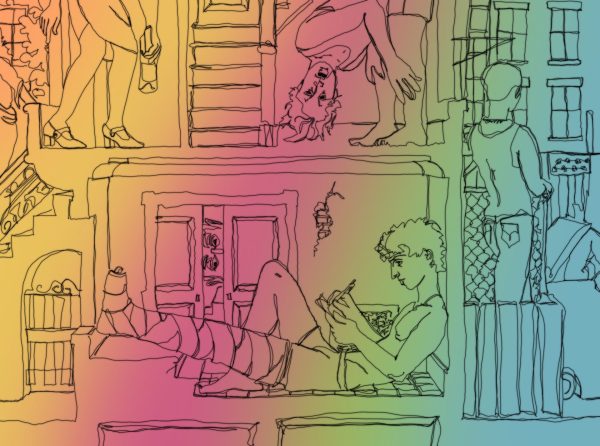Music Box Theatre on front lines of battle for film
Julian Antos spent his childhood in movie theaters around Chicago. And now, he spends his days working in one of the city’s best movie theaters, The Music Box Theatre on 3733 N. Southport Avenue in Lakeview as technical director. He works in a projection booth crowded with three massive film projectors, each with parts from multiple decades across the theater’s 91-year history in the city.
These projectors can be fiddled with to include several different types of film reels — 16mm, 35mm and 70mm, to name a few. Antos switches the reels out as the film keeps going, making seamless transitions that even trained eyes don’t recognize. As an audience member sits in the gaping, illustrious 700-seat theater, they hear the technicolor dreams of the film, while Antos hears rumbling machinery and the hissing of the film reel as it’s feathered in.
Step into the Music Box Theatre on a normal day, and you will see a long lobby and a classic-looking concession stand fixed with neon lights over the popcorn machine and a menu of overpriced snack food. You will see the main theatre and the smaller one sitting on the right. But to the left, up a dimly-lit staircase, you get to see where the “magic” happens.
I worked in a movie theater, a multiplex in the suburbs with 17 screens and a fully operational bar. The projection room was a terrifying room that looked like staff were always filming a “Paranormal Activity” movie in it. Seventeen computer-operated behemoths automate the commercials, trailers and film. It was a good day if nobody had to go up there.
Antos works in a completely different type of atmosphere, which fits the fact that when dealing with film instead of digital format, everything changes. Besides, they are two completely different ideas to begin with.
“For me, it’s that the two technologies are so inherently different that I don’t even, like, consider the next step in movies,” Antos said.
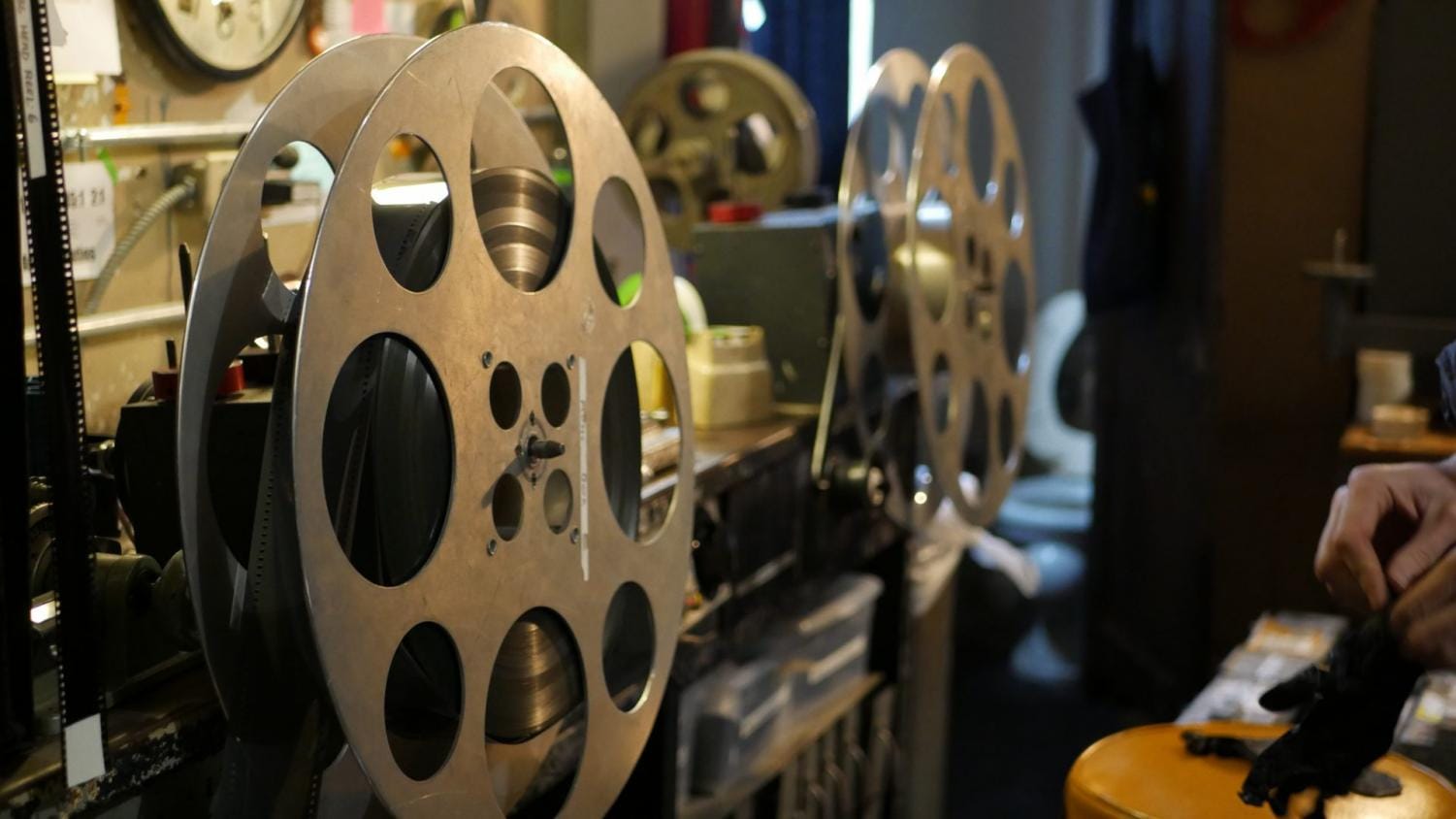
A 70 millimeter reel sits on Antos desk. Each reel carries around 15 minutes of run time.
The next step in movies is seemingly the complete outcast of the film format, which is more expensive, specialized and time-consuming than digital work. Film companies like Kodak that once ruled the world went under due to the digital age that we live in. Who keeps all of this alive?
People like Antos and his colleagues at the Music Box and the Chicago Film Society, which Antos co-founded in 2011, are holding things down on a community scale. But directors like Quentin Tarantino and Christopher Nolan have also upheld 70mm as a spectacle necessary for viewing movies. Indie darlings like Greta Gerwig, Sean Baker and Alex Ross Perry help keep it up. On top of that, hundreds of filmmakers you have never heard of — and probably won’t hear about — still believe in the power and richness of shooting a movie on filmstock.
“There’s plenty of people making movies on film like on super 16 millimeter for 30, 40, 50 thousand dollars,” Antos said. “So I think that the 70mm releases get all the attention because they’re big movies. But there’s still a lot of independent filmmakers working on film and experimental filmmakers.”
As digital became the law of the land and film companies started to go under, a natural clash came about. To abandon film completely would go against the human spirit, and the idea that the two could coexist became more and more apparent.
“I love showing movies on film,” Antos said. “I love all the machinery, I love the way it looks and digital cinema is just a really different beast.”
Preservation is a big key in all forms of art, and film has its own complications in keeping the ways of the past for future generations to enjoy. A film reel needs to be carefully handled and stored in a cool, dry place. A digital film needs to be constantly updated to fit new formats for computers and projections, and the process of preserving that on a digital scale actually becomes more time-consuming and difficult than managing a library of film prints.
Restoration is important as well. An old film reel from the 1960s can be scaled to a higher resolution like 4k and still hold up quite beautifully. A digital movie from 2012 could already look outdated today.
“It tends to date things, which is not always bad — I mean I kind of like it in some ways,” Antos said.
Film might just look flat out better, too. Proponents of film have long celebrated the richness and quality that is seen in prints that digital just cannot grab.
“There’s definitely a quality to the way the light’s reflected, the way the lights interrupted with the shutter, there are qualities in motion that are a lot nicer to look at, especially for a long duration,” Antos said. “I find the sort of stillness and some of the motion artifacts of digital, if you are looking at it for two or three hours are kind of not as easy on the eyes.”
When looking for the safe haven of film and communities that want to desperately keep the art of shooting on celluloid around, one might think that New York or Los Angeles are the only places left trying to keep it all alive. Yet that notion never worries Antos or his colleague Andy Berlin, who have found their tight-knit group of film defenders in the city that has never wanted to be like New York or Los Angeles.
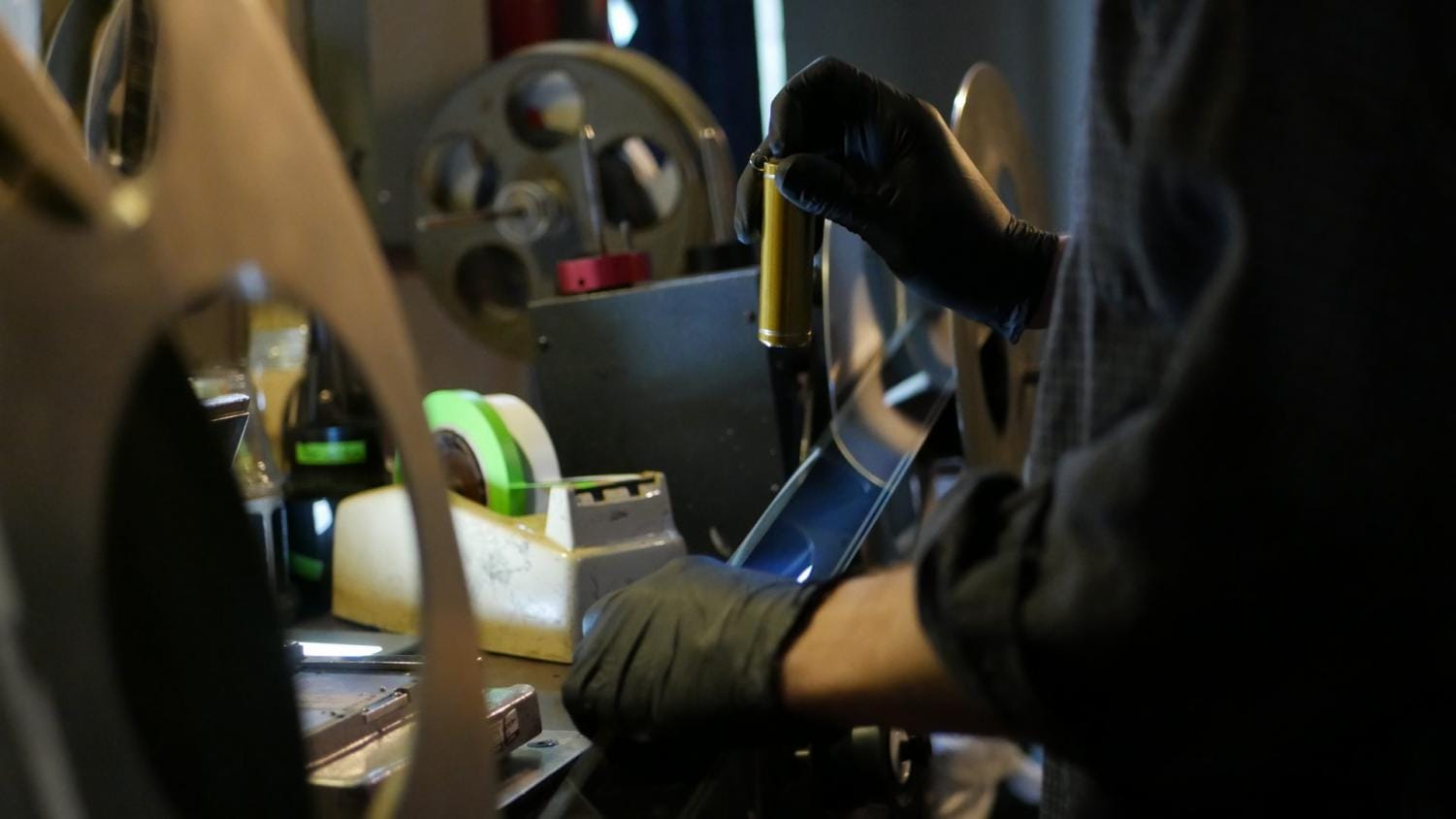
A 70 millimeter reel sits on Antos desk. Each reel carries around 15 minutes of run time.
“It’s not the overall community of Chicago, there’s definitely a community of people in Chicago who care about film,” Berlin said.
Berlin started as a concessionist at The Music Box in 2010 with the goal of becoming a projectionist. A graduate of Columbia College Chicago, he eventually worked his way to the role of projectionist while learning along the way.
“Philosophically, I wanted a job I actually care about,” Berlin said. “And I care about this, I don’t want to like, you know, cry at the end of every day.”
Berlin and Antos are a part of a group of dedicated people in Chicago who are working on keeping film going. The Music Box is currently five days into a 15-day 70mm film festival showing prints of movies like “Murder on the Orient Express,” “West Side Story,” “2001: A Space Odyssey,” “Roma” and “Interstellar.”
On top of the film festival, the Music Box runs films on celluloid formats throughout the year. There is almost always an opportunity to see a movie projected on film in Chicago. Other outlets dedicated to film preservation include the Gene Siskel Film Center, Facets in Lincoln Park and the University of Chicago Film Studies Center, to name a few.
“I think in smaller cities, not that Chicago is a small city, it comes down to the people who are running cinemas and whether or not they care about film on film exhibition,” Antos said. “And it comes down to how they’re educating their audience.
The Music Box helps create that culture of film appreciation and remains a place that’s still going against the push of digital.
“We make a point to really talk about [celluloid] a lot, even if after all these years it kind of feels like we’re belaboring the point,”


